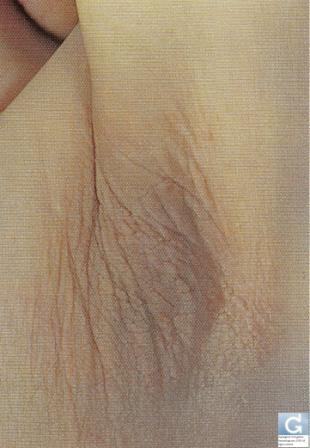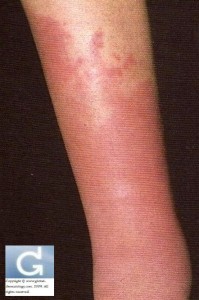Tabagisme et peau
What is obesity ?
- Obesity is a public health problem in the industrialized world.
- It is defined by a BMI (Body Mass Index) of more than 30 Kg/m2.
- In the United States, it is estimated that 30% of individuals are overweight or obese (BMI more than 25)
What medical conditions can we find when obesity is present ?
- It is known that individuals suffering from obesity have an increased incidence of:
- hypertension
- diabetes mellitus (especially type 2)
- dyslipidemia
- depression
- In the study mentioned in the bibliography, one can observe and increase incidence of ishaemic cardiopathy (although the authors didn’t find the difference to be statistically significant)
How does obesity manifest itself on the skin ?
Obesity is associated with several problems on the skin:
- striae distensae (stretch marks)
- The severity of the striae is directly proportional to the degree of obesity
- plantar hyperkeratosis
- skin tags (acrochordons):
- The number and size of the lesions is directly linked to the degree of obesity.
- Insulin resistance would be linked to the development of lesions.

Skin Tags (Acrochordons)
- intertrigo (infections by skin fungi (dermatophytes) and candida yeast)
- Is explained mainly by an increased cutaneous surface in the folds
- keratosis pilaris
- pseudoacanthosis nigricans:
- It is a benign form of acanthosis nigricans which affects more often individuals with a darker skin color
- It begins at puberty and is associates with obesity and insulin resistance. It regresses once these disturbances are corrected.

Acanthosis Nigricans (Similar in presentation to Pseudoacanthosis Nigricans)
- lymphedema
- The obstruction of natural lymphatic drainage channels by fat tissue is responsible of lymphatic stasis which concerns most often the lower limbs.
- bacterial infections
- Cellulitis and erysipelas are more frequent because of lymphatic stasis and the association with diabetes mellitus (insuline resistance)
Cellulitis
- Skin infections (folliculitis, impetigo…)
Folliculitis
Is psoriasis* associated with obesity ?
- Psoriasis is clearly associated with the metabolic syndrome (hypertension, diabetes mellitus, dylipidaemia).
- In this study, there is an increased incidence of psoriasis in obese individuals when compared with normal weight individuals. (although the result is not statistically significant)
Psoriasis (Plaque type)
- Also, other studies show a clear association between psoriasis and diabetes mellitus:
- The severity of psoriasis* is proportional to the BMI
- Severity of psoriasis is graded using the PASI scale (Psoriasis Area Severity Index)
What should I do ?
- Consult a dermatologist who in addition to the mangament of the skin condition will be able to organize a complete plan by collaborating with:
- primary care physicians
- nutritionists
- endocrinologists
- cardiologists
- gastroenterologists…
Bibliography
Skin manifestations of obesity: a comparative study.
Boza JC, Trindade EN, Peruzzo J, Sachett L, Rech L, Cestari TF.
J Eur Acad Dermatol Venereol. 2012 Oct;26(10):1220-3. doi: 10.1111/j.1468-3083.2011.04265.x. Epub 2011 Sep 20.
This comprative study concerns a total of 156 patients, including 76 with a BMI over 30.
Related posts



